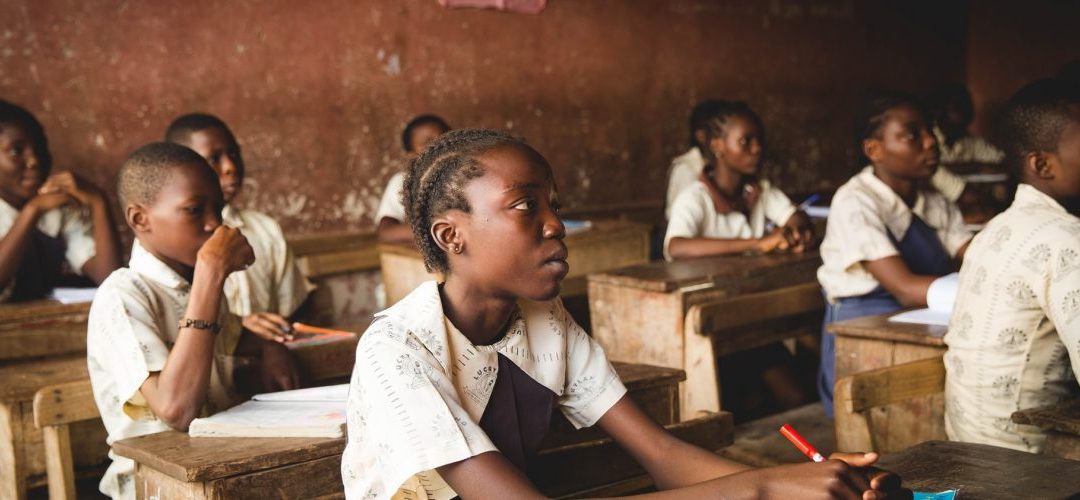The spread of the coronavirus through the globe from China initially spared Nigeria, like many other Africa countries, with zero recorded case as at January 2020. By 28 February, however, Nigeria reported their first case, a Nigerian UK returnee. Nearly two months later there are 373 confirmed cases, 99 recoveries and 11 deaths (see Knowcovid19.ng for real-time updates).
Consequently, on 19 March, the Federal Ministry of Education announced the temporary shut-down of all schools in Nigeria, effective 23 March, in a bid to contain the spread of the coronavirus. This prompted a set of questions: “Do schools in Nigeria have the technology to cater for the estimated 46 million students affected? Do households have the facilities to engage their children in remote learning? Do teachers have the skills and facilities to deliver live lesson or record massive open online course (MOOC) styled lessons?”
Children being out-of-school has long been the reality in Nigeria education sector, with about 13.2 million school-age out of school, the highest in the world. Even though the basic (nine) years of education are free and compulsory, many children are not in school due to factors such as poverty, gender gaps, religion and regional factors, among others. Nigeria allocates about 7 per cent of their national budget to education, as opposed to the 15 to 20 per cent recommended by UNESCO.

The school-closure measure means learners previously in school are no longer going to school. The drastic escalation of coronavirus will not only affect learning, it will compound the pre-existing education inequalities in Nigeria, with vulnerable and disadvantaged children at the receiving end. To curb the widening of the existing education inequalities, there is an onus on the Nigerian government to put in place measures to ensure continuity, inclusion and equity for all learners during this pandemic.
Unlike her western predecessors, the Federal Ministry of Education’s school-closure directive did not produce clear-cut policy measures on how to mitigate learning disruptions for children and how to address the digital divide. The Coordinated Education response to COVID-19 pandemic on the landing page of the Ministry website is vague and does little to address the learning needs of the most vulnerable and disadvantaged. The single well-documented response is the Nigeria Education in Emergency Working Group (NWiWwg) Strategy, published on 7 April 2020 which aims to mitigate the negative impact of the school closure on learners and teachers in North-East Nigeria.
While the efforts of the Federal and State government in the health sector and in providing financial stimulus packages and emergency palliatives must be commended, ignoring the education sector would be disastrous. As emphasized by UNESCO, temporary school closure comes with high social and economic costs, with severe impact on children from disadvantaged background.
The coronavirus pandemic has exposed the huge socio-economic inequalities in the Nigeria education system. Many wealthy families in Nigeria send their children to private schools given the poor resources and facilities in public schools. These children might experience little disruption to their learning, because their private schools are well equipped with ICT infrastructures and they can afford remote learning. Learners from vulnerable and disadvantaged communities, without access to computers and other devices outside school, will, however ,be left struggling. In many cases, these children live in communities with poor or non-existent internet connectivity and epileptic power supply. Inevitably, this digital divide will exacerbate learning disparities among these children.
What is the next step?
The temporary school closures mean educators, funders and policymakers are rethinking the way learning is delivered and accessed. In China, for instance, governments provide computers to students from low-income households and offer students mobile data packages and telecommunication subsidies. In France, efforts are being made to lend devices to learners who do not have access to computers. Similarly, Portugal is partnering with the post office to deliver worksheets to students who do not have access to internet at home.
In Nigeria, some State governments (such as Kwara and Lagos) use local media channels such as radio programmes to reach out to learners in remote communities. The government could further mitigate the negative impact of Covid-19 on education by investing in the provision of solar-powered educational gadgets, pre-loaded with offline academic resources to learners in disadvantaged and vulnerable communities.
The government should also partner with telecommunication companies to offer free or subsidised mobile data packages for learners. The Nigeria Education in emergency Working Group (NWiWwg) Covid19 Response Strategy should be scaled-up, to include other regions in the country. Of course, these policy measures would require significant financial investment, but such investment is worthwhile for the progress of the economy in the long-term.
Looking ahead, it is pertinent to ensure #LearningNeverStops during this pandemic.
This article was first published on SOAS Blog, with permission from the author.


Recent Comments